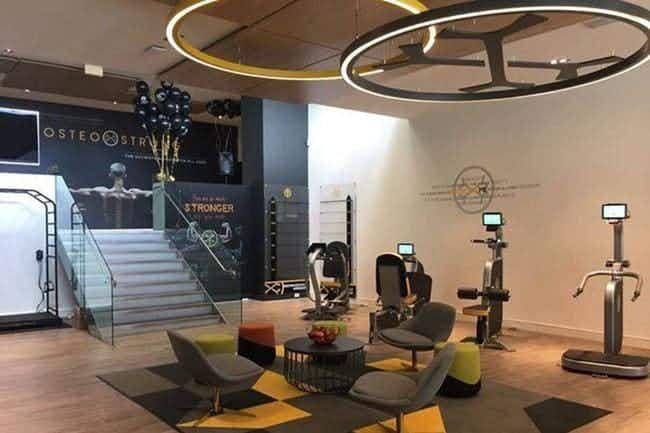- By GQ Magazine on January 21, 2020
These Are The Biggest Fitness Trends Of 2020
It’s time to mix things up.
It’s one of the stranger sights at the gym. Aside from catering to the sheer vanity that compels workout bros to constantly check themselves out in the name of form, you will often see PTs getting rather intimate with clients under the guise of post-session flexibility.
As they chat Netflix binges or Insta trends, limbs will be pushed back over shoulders and legs splayed in sequences that appear to have been lifted directly from the Kama Sutra.
Stretch labs
Make no mistake, however, the business of stretching is swiftly becoming commodified and franchised. It’s no longer a prelude to a workout or a finishing touch but an event in itself.
Instead of counting you through reps or critiquing your squat technique, “flexologists” gets pretty handsy and guide then hold you in certain positions to elongate the muscles that have constricted and the joints that have compacted during training. Or just sitting a desk for eight hours attempting to look busy.
It all started, naturally, in Los Angeles when local attorney Saul Janson was inspired by the hands-on cool-down stretch he got from trainer Tim Trost. Enlisting Aussie stretch guru Brad Walker, they launched a company called Stretch Lab. Which now boasts almost 50 studios around the States - charging from approximately A$60 for a 25-minute session - and has spawned competitive chains such as Stretch Pro.
Closer to home The Stretch Lab, which has branches in Terrigal and Newcastle in NSW, offers assisted stretching from $90 for 45 minutes with health fund rebates. For more information go to thestretchlab.com.au
Bone density workouts
Another trend that has sprung up in the United States and has made its way to Australia are workouts that don’t focus on muscle but bone. Specifically, bone density.
The most common illness resulting from bone density issues is osteoporosis but many men are still in denial about it. According to Osteoporosis Australia, 25 per cent of people with the condition are men. In fact, we are more likely to get it than prostate cancer.
This is where studios like OsteoStrong come in. Founded in Texas in 2012 by biomechanics engineer John Jaquish, whose mum was suffering with osteoporosis, the workout relies on Osteogenic Loading. Which translates to a quartet of resistance machines including a chest press, leg press, core pull and skeleton-stressing vertical lift.
Unlike your standard gym gear, there are no weight stacks and the handlebars barely move during the 30 seconds of all out effort required at each station. That said, the biometrics are closely monitored and the entire workout lasts two minutes of cumulative time. Osteostrong is currently operating out of two locations in Victoria - South Melbourne and Hawthorn.
For more information and pricing , go to osteostrong.com.au
Functional beverages
Fitness supremo Jillian Michaels sees 2020 as being a year where adaptogens, probiotics, brain-firing nootropics and CBD (okay not in Australia yet) are added to everything from sparkling water to cold brew.
One of the main players will be collagen powder plopped into drinks in the name of better skin. This movement is well under way in Australia with GQ Audi Innovation of The Year award winner Sipp Coffee marketing a blend enriched with probiotics. It’s a marketplace that is only set to become more crowded.
PHOTOGRAPHER: ISTOCK Wellness at work According to a survey carried out by Canadian company Canfitpro, one of the prime trends to emerge in 2020 will be wellness at work.
While it would be lovely to suggest that the corporation you work for deeply cares for body and soul, the reality is that programs like lunch yoga or team meditation prevent burnout and reduce absenteeism.
Major Australian media houses and banks already have wellness programs in place and supplement companies like Blackmore’s have long led the way. In this decade, the practice will steadily trickle into smaller independent firms and even retail.
Body inclusivity
People who go to the gym look like people who go to the gym. And that’s the problem. It can be far from a welcoming space to those who jiggle, wobble and don’t fit the stereotype. Which means they don’t take the necessary steps - both literally and figuratively - and the cycle deepens.
With awareness of fat/body shaming on the rise, personal trainers are moving away from goals of thinness to increased wellbeing and living a healthier longer life. As with other long overdue shifts, accessibility will also be in focus. All of which will slowly but surely expand the types of bodies you see at health clubs.
Sweating with the oldies
According to the last census, there were 3.8 million Australians aged 65 and over. It’s a figure that will steadily increase through this decade as better tech-driven health care comes into play along with ever increasing understanding of nutrition and improved diet.
Not only do retirees often have more time on their hands, those franking credits are burning a hole in their pockets. Look for exercise programs that specifically target the elderly and gyms that are set up especially for those who remember when porn was something you found in magazines.
Optimize your health through science
By clicking “Subscribe,” you agree to our privacy policy & to receive emails/texts with updates.
